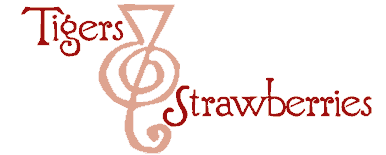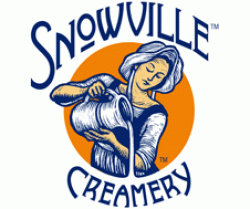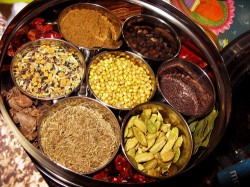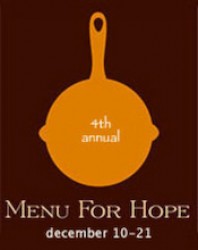Hunters, Locavores and Critics, Oh, My!
Hunters have a bad reputation in the United States, and sometimes, I am sad to say, it is warranted.
I mean, Ted Nugent’s “Whack and Stack” rhetoric, while it certainly is attention-getting, doesn’t really positively influence the anti-hunting crowd towards changing their minds. The whole NRA mindset that Americans should have virtually unlimited access to every kind of firearm under the sun tend to make liberal city folk twitch–and sometimes with good reason. The fact that across the country, lots of innocent people are accidentally shot in the woods, in their homes, in their cars or in their own yards, by stray bullets fired by either stupid or drunken redneck hunters every hunting season is at best a case of a public relations nightmare for the hunters of America; at worst, it is an indictment of all of them as irresponsible, uncaring, selfish gits.
Shall I even make mention of Dick Cheney paying to shoot at birds raised in cages who are thrown into the sky right where his gun is pointing? Or the fact that he is so untrained in gun safety, he managed to shoot his friend and “hunting” buddy in the face at point blank range by accident?
I mean, if you mix all of these facts together, and throw in a dash of unreasoning liberal fear of firearms for good measure, you have a recipe for a very low public opinion of hunting and hunters in the U.S.
There is a cure for that low opinion, notes Steven Rinella in his recent Op Ed piece in the New York Times entitled, “Locavore, Get Your Gun.” Even though Rinella makes the incorrect statement that the locavore movement has ignored hunting as a viable means to eat locally (Michael Pollen describes in detail his very own wild boar hunt in California in The Omnivore’s Dilemma), it is true that there are very few self-proclaimed locavores who hunt. There are plenty of hunters who eat what they kill, but they tend not to call themselves locavores.
Here in Appalachia, nearly every hunter I have ever known–and I was born and raised in Appalachia and have lived in this region most of my life–has eaten what he or she has killed. With very few exceptions, hunters in Appalachia kill for food first, and trophies second. There is a good reason for this–there are a whole lot of poor folks in rural Appalachia and killing several deer, wild turkeys, ducks and a bunch of squirrel or rabbits and cleaning and cutting them up yourself and putting them in your freezer is a cheaper way to feed your family than to buy meat at the local grocery store. Hunters who get lucky and kill more than their own families can use have traditionally shared with the extended family and neighbors–in recent times, this has extended to giving excess meat to food pantries and homeless shelters to feed those who cannot go out and hunt for themselves.
What it comes down to is this: here in Appalachia, hunting (and fishing, for that matter) is very deeply entwined with our culture, just as farming is. Self-sufficiency is a thread long woven into the fabric of our lives here in the hills and we are proud of our ability to eat well on very little money. These traditions are not as prevalent as they were in the past, but truly, they are yet quite alive and well in the world of modern rural and semi-rural Appalachia.
Hunters here in Appalachia are not all angels, of course. We still have the drunken fools running about armed in the woods wreaking havoc upon wildlife, humanity and buildings, just like other parts of the country. What we do tend to lack, however, are the rich weekend hunters in their expensive Eddie Bauer Elmer Fudd clothes, plunking down top dollar to hunt domesticated exotic animals at so-called “hunting parks.” Shooting at wild animals raised in unnatural conditions where they have no natural fear of humanity, and they have lost all instinct for flight is not hunting. That is just shooting at living targets.
Even so–when people in other parts of the country bring up criticisms of hunters where they generalize that they care more for trophies, drinking and reckless behavior than ethics, safety and feeding their families, I always shake my head. Sure, there are hunters like that around. But most of the critics who go on about how awful every hunter in the world is, and that they are all like this, are almost always people whom I think may not have ever met a real hunter in their lives.
Where I grew up, and where I now live, that is just not the norm. Hunters here are pretty much what I would classically call a locavore, in the most visceral and true sense possible. They go out, find their meat on the hoof, stalk it, kill it, field dress it (a very unpleasant process–you gut and bleed it right there in the woods–and it is a smelly, messy task–trust me on this), and either take it to a butcher to process it, or, if they have the equipment, they skin, behead and cut up the carcass themselves.
Personally, I think that anyone who has the stomach to do this deserves respect. Because they not only are confronting the ugly reality that meat must come from a living being head on–they are doing a good portion of the dirty work of making meat edible on their own.
Very few modern people who eat meat can do that. Many of them cannot even look at a bit of meat on the bone without wincing–yet they eat the meat anyway.
Personally, I give more respect to a hunter who takes some amount of the responsibility for killing and butchering the animals that his or her family eats than a suburbanite who sneers at hunters and hunting, and eats factory farmed meat while making note of how sensitive they are because they hate to think about meat coming from animals.
So, hey, locavores–let’s stand up for the ethical, safe hunters we know. Let’s reach out to them and recognize them as people who were locavores before the term was popular. Heck, they were locavores before the word was even coined.
Because, really–they are doing the same thing we are doing–they are eating from their local foodshed.
They just happen to be doing it differently than many of the rest of us are–but they still deserve respect.
The Best Milk I Have Ever Tasted
I am thrilled to be able to finally drink minimally processed, unhomogenized cow milk that is produced within twenty-five miles of my home.
While I love Ohio Family Farms organic whole milk, and think it beats other, national brands of organic milk (like Horizon) hands down, the first sip of Snowville Creamery’s unhomogenized whole milk blew me away. It was like nothing I had ever tasted before–clean and pure in flavor, and fresh as fresh could be. It is processed minimally the same day as the milk comes from the pastured cows, right on the farm. It is pasteurized–it is illegal to sell raw milk in Ohio, but instead of being ultrapasteurized at a very high temperature for a shorter period of time, it is pasteurized at a lower temperature for a very slightly longer time. This results in an amazing flavor difference that is beyond compare.
And–get this–these pastured cows are not raised with rBGH–and the milk is cheaper than either Ohio Family Farms milk, Horizon or Organic Valley. In fact, the price is meant to be comparable to mass-produced non-organic milk in price–and it comes quite close. And the quality is miles ahead of all of the other fluid milk products I have ever had, organic or conventional.
So, uh, let me see–I can get a better product that tastes fresher and which supports our local rural economy–and save money?
Oh, good lord, please sign me up for that!
I believe I have just become a convert of the “Dairy Evangelist,” Warren Taylor, the outspoken and passionate owner of Snowville Creamery. (I have note here–his daughter is one of Morganna’s best friends here in Athens–but really–I’d like this milk regardless of who had anything to do with producing it.)
Look for an in-depth post in the very near future including an interview with Warren and Victoria Taylor, as well as the farmers who raise the dairy cows. Hopefully, I can also get to visit the farm and processing facility so I can take photos of the operation, so that readers can get a really great glimpse of what it is like to be a small food producer in rural Appalachia.
Until then, let me just say give a big thank you to Warren and Victoria for bringing their dream of a local dairy to fruition, because I, for one, am going to spread the word. You guys rocked my world and I am going to do my best to get everyone I know to try your milk, and taste the difference a truly local dairy can make.
And I have to say–I am really looking forward to trying the butter I hear is in the works from Snowville Creamery. I hope that there might be some in time for the holiday baking season.
The Culinary Nerd Plays Free Rice…And Plays, And Plays, And Plays…
Hello, my name is Barbara, I am a Culinary Nerd, and I have a problem.
With addiction.
I can’t stop playing Free Rice.
Why?
Well, besides the fact that it is a vocabulary game that tests your language skills by giving you words, and then four choices of definition, which, for a literary nerd like myself, is irresistible, (yes, in addition to being a Culinary Nerd, I am also a Literary Nerd) but for each correct answer you give, 20 grains of rice are donated to the United Nations World Food Program. The money comes from the advertisers who support the site, and the words come from professional lexicographers, and the time to play–well, that comes from me multitasking while I am doing other
stuff at the computer.
The game is bloody addictive–there are words in fifty levels of difficulty, and after the first few words, a baseline level of difficulty is set for you. Then, to quote the FAQ:
FreeRice automatically adjusts to your level of vocabulary. It starts by giving you words at different levels of difficulty and then, based on how you do, assigns you an approximate starting level. You then determine a more exact level for yourself as you play. When you get a word wrong, you go to an easier level. When you get three words in a row right, you go to a harder level. This one-to-three ratio is best for keeping you at the “outer fringe†of your vocabulary, where learning can take place.
And, as the FAQ states, that while there are fifty levels, it is rare for anyone to go higher than forty-eight.
I’ve gone to level fifty several times, though most of my playing time is spent around level forty-six or seven.
The truth is, the damned game, which is played for the best of purposes, has hit my self-competitive streak, where in everything I do, I try one-up myself every time. So, once I hit level fifty, I wanted to work towards staying there. So, I am learning all kinds of new words, like “psalterium” which I guessed correctly meant “third stomach.”
Or, “weasand,” which means “throat,” which I neither knew nor guessed correctly.
Zak and Morganna make endless mock of me for it, but I am hooked. It is too much fun, learning new words, or puzzling out what an unfamiliar word probably means from divining the root word, and going from there. I just love stuff like that, and because English is a language which has root words in it from many languages: Anglo-Saxon, French, Latin and Greek, primarily, it makes these sorts of games so much more fun and challenging to play.
So, other than telling everyone who loves words and feeding people to go play, and to be prepared for the jibes of your friends and family once you get addicted, do I have any words of advice?
Well, I have noted several things about the words chosen for the upper levels.
Many of them are archaic, meaning, they are seldom in use any more. Many of them have to do with arms, armor, carriages, horses and ships, which have little commerce in modern life. (Which means all you SCA geeks and readers of Sir Arthur Conan Doyle and Patrick O’Brian will be in your element.)
Many of these words have French or Latin roots, with a smaller number of them from the Greek. If you have any knowledge of any of these languages, you will do well at Free Rice. I, nerdy woman that I am, have had five years of Latin in school, and three of French, so…yeah. Many of the Greek-based words are medical terms which you can pick up by watching those doctor shows on television, though I got a lot of mine by once being a pre-veterinary/pre-med student. (And growing up watching M*A*S*H obsessively. That helped.)
If you are from the UK, you will notice a great number of primarily archaic, but some modern British. slang terms which seem quite strange to Americans, (and thus they have a higher difficulty level) than you would guess. I got those from being a great reader of English literature and a big fan of lots of the shows on the BBC, past and present.
And there are a lot of terms relating to food: French and Latin-based primarily, so all the foodies around here should get it.
In fact, I would say that anyone who reads and writes a lot (like, um, say, bloggers) and anyone who cares about feeding people (that would be foodies), would not only do well with this game, but would feel good about it.
Even if it does label you as a big old egghead for life, and makes you the object of gentle derision for your immediate family.
Updated Description and Photo of “A Gift of Indian Spices” Menu For Hope Prize
Now, you can finally see all the goodies which will come to the lucky winner of prize number UC06: “A Gift of Indian Spices” from the Menu For Hope raffle. Everything you see, with the exception of the jars holding the three kinds of dal, will be included in the gift.
The dals which will come with the gift are two pounds each masoor dal–which are those pretty orange split lentils you see in the big jar, toor dal, which are in the medium sized jar, and moong dal. You can cook these separately or in any combination and they make a great protein-rich vegetarian dish.
Now, let’s talk about the spices, and the masala dhaba–the traditional Indian spice tin you see in the middle of all the goodies.
The masala dhaba has seven little cups which go into the big outer tin. The large outer tin also has an inner lid which fits tightly, keeping the spices sealed in an airtight environment, and a spoon, which is used to scoop the spices out for use. Then, there is an outer lid which seals everything up perfectly, keeping out moisture, light and all the other things which are bad for making your spices stale.
It is of solid stainless steel construction, and is nice and shiny. It is meant to be left out on your counter, near your stove so you can use it every day. It will last a lifetime, I promise you.
It will come with the spices pictured–or at least, if not these exact spices, ones like them.
Here is a closeup of the masala dhaba along with all of the spices that will come with it. (I will pack the spices in little plastic bags for shipping so they don’t get spilled and messed up. The spices included are, from the top going clockwise: very pungent black malabar black peppercorns, brown mustard seeds, which you can use ground or whole–I like them best whole, whole green cardamom pods–you can use them whole, or ground, cumin seeds–again, I love them whole, a hand-mixed batch of Bengali panch phoron–my very favorite Indian whole spice mixture containing cumin, nigella, fennel, mustard and fenugreek seeds, all whole–this mixture does magical things to any vegetable dish, and in the center, coriander seeds.
Along the periphery, filling in the gaps between the inner tins, you see that I have tucked more spices. This is not how you are supposed to store spices in your masala dhaba, but I really wanted to give the winner a lot of really good spices, so, again, clockwise from the top, you will see cinnamon sticks, dried sanam chilies, bay leaves, whole dried Thai chilies I grew this summer, black cardamom pods–go easy on these, they are strong!, and Pakistani whole dried chilies which are super, super SUPER hot.
Oh, wait–I forgot one spice mixture–see the one ground spice in the tin, next to the panch phoron? That is my own house garam masala–a mixture of spices I toasted, and ground to be sprinkled on a dish near the end of cooking to add that last little fillip of fragrance and heat. The winner has a choice with this one–I can send it to them with the spices toasted but whole, ready to grind, or ground up and ready to go. In either case, it will be done right before I ship the package off, for optimum freshness.
And, finally, the Stash Tea gift box includes six types of teas, all sealed for freshness, all from India, packed in the absolutely gorgeous box you see here. I love the art on the box, and would be tempted to frame the lid and hang it on a wall in my kitchen if I were keeping the box.
To read more about the books you see–if you haven’t read my first post about this prize, check it out here.
If you have any questions, feel free to post them, and I will answer as soon as I can.
You can see the little spoon for the masala dhaba in the garam masala.
A Menu For Hope 2007 Begins!
Hello, everyone!
Welcome to the beginning of A Menu For Hope campaign for 2007, hosted by Pim at Chez Pim where food bloggers come together and raffle off great prizes and gifts to help raise money for the United Nations World Food Program. The funds raised by this year’s raffle will all go to the Lesotho school lunch program. To read more about this program, check out this post at Chez Pim.
To see a list of all the prizes being offered by food bloggers, go to Chez Pim and check them all out.
Kalyn at Kalyn’s Kitchen is a regional coordinator for the Midwestern US, and she has a list of all the prizes from bloggers in her area, where you can see larger photographs and links to all the blog posts describing them. You can check out that list here.
I posted about my prize, which I call “A Gift of Indian Spices,” on Saturday; follow the link here to read about it. The prize code for “A Gift of Indian Spices” is UC06.
Here’s How to Participate in A Menu for Hope:
1. Choose a prize or prizes from our Menu for Hope at Chez Pim. (Check the morning of December 10 to see all the prizes.)
2. Go to the donation site at First Giving and make a donation.
3. Please specify which prize you’d like in the ‘Personal Message’ section in the donation form. You must write in how many tickets per prize, and use the prize code. (Each $10 you donate will buy one raffle ticket toward any prize.For example, a donation of $50 can be 2 tickets for EU01 and 3 tickets for EU02. Please write 2xEU01, 3xEU02.)
4. If your company matches your charity donation, please check the box and fill in the information so we could claim the corporate match.
5. Please check the box to allow us to see your email address so that we could contact you in case you win.Your email address will not be shared with anyone. Check back on Chez Pim on Wednesday Jaunary 9 for the results of the raffle.
That’s how it all works. A Menu For Hope runs from today, December 10 through December 21.
Now–let the giving begin!
Powered by WordPress. Graphics by Zak Kramer.
Design update by Daniel Trout.
Entries and comments feeds.







